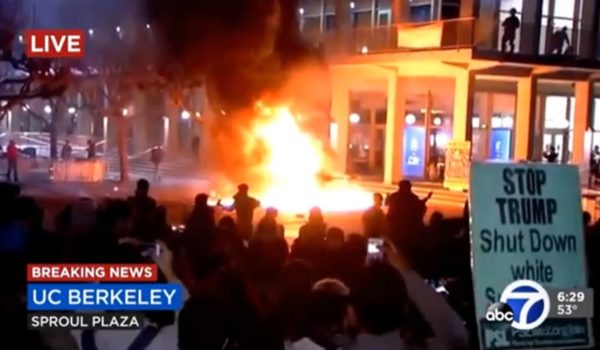
Happy Palm Sunday! Long-time readers might remember my writing about growing up Jewish; I thought Palm Sunday glorified palm trees and Good Friday was a Friday in spring that was “good.” So for decades, I was blissfully ignorant, as are many folks, about the meaning of today, next Friday, and Resurrection Sunday (Easter.)
Writing this study, I assume minimal knowledge on behalf of readers while trying to make the Bible less intimidating for all the “young Myras” out there. Thus, let’s start with the basic facts about Palm Sunday recorded in all four gospels:
Matthew (21:1-11) — Mark (11: 1-11) — Luke (19:28-41) — John (12:12-19).
The Sunday before Easter commemorates the “Triumphal Entry” of Jesus into the Holy City of Jerusalem, where He was enthusiastically welcomed by ” fans ” waving palm branches. Conversely, the Jewish religious authorities feared Jesus’s growing popularity, which they believed threatened their rule. A power struggle helps to explain what happened to Jesus from Palm Sunday to Easter Sunday – part of a Divine plan.
Remember this “power struggle” as you read “Five Reasons Why Palm Sunday is Meaningful.”
1. Jesus entered Jerusalem only weeks after raising Lazarus from the dead.
If you are unfamiliar with the Lazarus story, refer to Vol. 52. The Jewish leaders were increasingly concerned that Jesus challenged their authority and power, best summarized in John’s gospel:
“Then [after raising Lazarus], the chief priests and the Pharisees called a meeting of the Sanhedrin. ‘What are we accomplishing?’ they asked. ‘Here is this man performing many signs. If we let him go on like this, everyone will believe in him, and then the Romans will come and take away both our temple and our nation’ ” (John 11:47-48).
That passage illustrates the power struggle. Those with the power fear it is slipping away and must take action to stop the threat.
Jesus’s reputation for miraculous works preceded Him. Most significant was His raising Lazarus from the dead after four days in the tomb — the number one topic among the crowds streaming into Jerusalem on Sunday to begin celebrating the Passover holiday.
The Gospel of John describes the scene on Palm Sunday:
“Now the crowd that was with him when he called Lazarus from the tomb and raised him from the dead continued to spread the word. Many people, because they had heard that he had performed this sign, went out to meet him. So the Pharisees said to one another, ‘See, this is getting us nowhere. Look how the whole world has gone after him! ’ ” (John 12:17-19).
Fear and panic are besetting the powerful.
2. The Hebrew Scripture has a Messianic prophecy about Palm Sunday.
Jesus enters Jerusalem riding a donkey – a lowly animal unfit for a king. However, Jesus was sending a clear signal about His identity since the palm-waving crowd was familiar with the ancient Hebrew scripture, subtitled, “The Coming of Zion’s King”:
“Rejoice greatly, Daughter Zion! Shout, Daughter Jerusalem! See, your king comes to you, righteous and victorious, lowly and riding on a donkey, on a colt, the foal of a donkey” (Zechariah 9:9).
3. The residents of Jerusalem were largely unfamiliar with Jesus.
Jesus’s rock-star status primarily stemmed from the Passover pilgrims traveling to Jerusalem who were familiar with or had recently heard about the Lazarus miracle. Matthew’s gospel illustrates those circumstances:
“The crowds that went ahead of him and those that followed shouted, ‘Hosanna to the Son of David!’ ‘Blessed is he who comes in the name of the Lord!’ ‘Hosanna in the highest heaven!’ When Jesus entered Jerusalem, the whole city was stirred and asked, ‘Who is this?’ The crowds answered, ‘This is Jesus, the prophet from Nazareth in Galilee’ ” (Matthew 21:9-11).
(You can read last week’s Vol. 158 to learn more about the “Son of David” reference.)
To reiterate, first, “the crowds that went ahead of him” were most familiar with Jesus and His miracles, so they celebrated His entry into Jerusalem.
Second, “Who is this?” asked the Jerusalem residents. The “crowds” said, “This is Jesus..” Both points help explain why Palm Sunday’s welcoming crowd flipped and yelled “Crucify him” on Friday. Since Jerusalem residents did not know Jesus, they were likelier to believe the Jerusalem temple authorities/Pharisees who condemned Jesus as a “blasphemer,” NOT the Messiah, and therefore must be executed. The power struggle is on full display.
4. Jesus infuriated the Pharisees and belittled their authority.
During the “Triumphal Entry,” the Pharisees are furious. They feel their power is diminishing while popularity ratings are trending down. Moreover, their fears about Jesus came to fruition when they saw him greeted like royalty and were alarmed by the king riding a donkey Scripture reference. Worse, when they confronted him, Jesus made a snappy authoritative political statement of truth – my favorite Palm Sunday one-liner recorded in Luke:
“Some of the Pharisees in the crowd said to Jesus, ‘Teacher, rebuke your disciples!’ ‘I tell you,’ he replied, ‘if they keep quiet, the stones will cry out’ ” (Luke 19:39-40).
5. Jesus entered Jerusalem to die.
It was Passover week, and Jesus was the sacrificial lamb.
In Exodus chapters 11 and 12, read how God used the blood from slaughtered lambs to free the ancient Israelites from Egyptian bondage. Approximately 1480 years later, Jesus was the “sacrificial lamb of God.” He used his body and blood to free His people from the bondage of sin and offer eternal life to those who believe in Him.
Upon entering Jerusalem on Palm Sunday, Jesus knew He would die a horrible death on Friday. However, Jesus also knew He would triumph over death.
Palm Sunday shows the humanity of Jesus. Easter Sunday shows his divinity.
The Resurrection of Jesus is His greatest miracle proving His identity. Today, Jesus is alive. His spirit lives and dwells among us. Here are two verses to think and pray about during Holy Week:
“ I have been crucified with Christ and I no longer live, but Christ lives in me. The life I now live in the body, I live by faith in the Son of God, who loved me and gave himself for me” (Galatians 2:20).
“Christ in you, the hope of glory” (Colossians 1:27).
Amen and Alleluia!
Myra Kahn Adams is a conservative political and religious writer with numerous national credits. Her book, “Bible Study For Those Who Don’t Read The Bible,” reprints the first 56 volumes of this popular study. “Part 2,” with the same title, reprints Vols. 57-113. Order it here.



